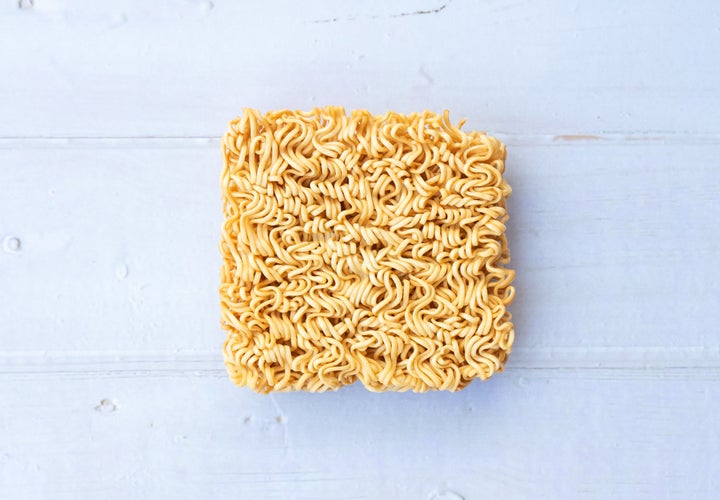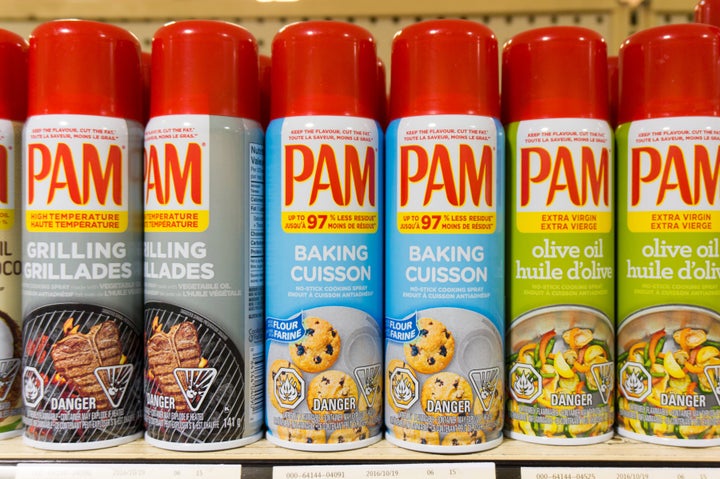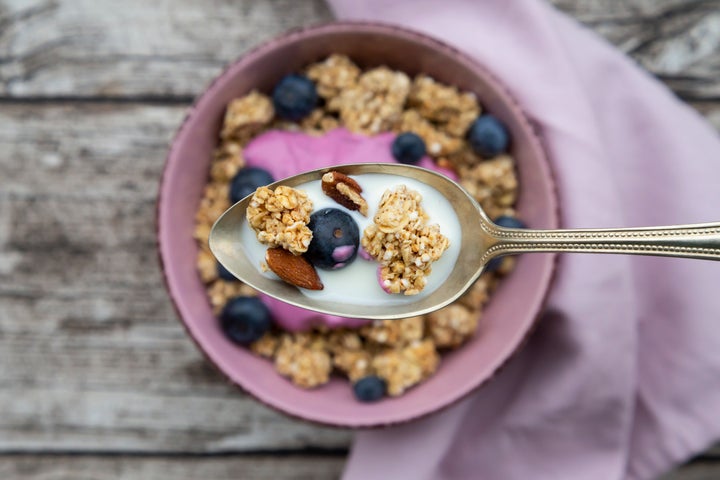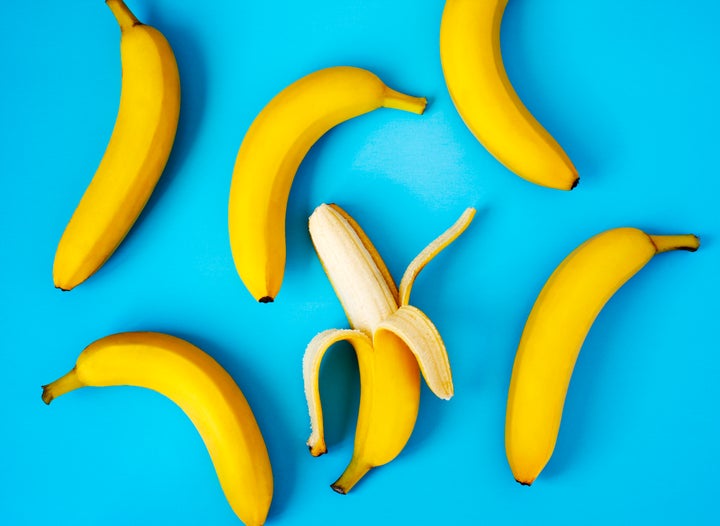The serving sizes on packaged food items and in dietary manuals can seem like useful tools for anyone seeking to monitor their calorie intake or consumption of different proteins and vitamins. And, in many cases, they can guide you in the right direction.
However, it’s important to remember that serving sizes are sometimes misleading, and it’s very easy to misread and misinterpret these guidelines.
That’s why we asked a group of 10 nutritionists to share the food serving sizes that they most often see misunderstood, to give us a clearer view of food-related expectations vs. realities.

1. A single serving of instant ramen is only half of a ramen ‘brick’
A dietary staple for college students and anyone on a budget, instant ramen comes packaged in plastic-wrapped “bricks” of noodles, which you then cook in boiling water and season with included flavor packets (or you can ditch the packet and spruce it up with fresh vegetables and other seasonings). Because the noodles are deliberately portioned and wrapped, most consumers assume that one “brick” equals one serving. But if you carefully read the nutrition facts, you’ll find that a serving of ramen, which rings in at 190 calories, only includes half a brick of noodles and half a packet of seasoning.
Of course, that isn’t going to stop most ramen fans from enjoying the whole brick as a convenient and beyond affordable meal. And, according to certified nutritionist Jenny Fowler of First Mile Care in California, eating more than one serving of any given food on occasion isn’t something to worry about, as long as you’re doing it mindfully and considering your dietary needs.
“Let’s clarify that a serving is what is stated on the package, while a portion is how much you actually eat. It’s not bad to eat more than a serving, as long as you are aware that you are doing so,” Fowler assured HuffPost.
2. One serving of raw almonds includes about 12 almonds
When it comes to nutritious snacks that regularly earn the praise of dietitians and nutritionists, protein-packed raw almonds rank high on the list. That said, many consumers dive into a bag of almonds with their hands, figuring that a big handful or two constitutes one serving.
However, nutritionist Heather Hanks cautions that a serving of almonds may be far smaller than you think. “One serving of raw almonds is about 12 almonds,” she told HuffPost. “Most people do not count out how many almonds they eat before they start digging into the bag.”
She also cautioned that nuts with added oils and sugars can be higher in calories. “While you don’t have to count out your nuts before you eat them,” Hanks said, “it’s a good idea to keep your portion sizes to a small handful.”
3. Not all ‘low-calorie’ ice cream is created equal
“Healthy” ice creams are having a major moment right now; the rise of vegan dairy led to an increase in both plant-based ice creams and dairy-centric ice creams with lower sugar and fat content. Brands like Halo Top became famous for crafting dairy-free ice creams so low in calories that you could eat an entire pint while consuming under 400 calories. And that’s exactly why certified nutritionist and personal trainer Jamie Hickey of Truism Fitness urges clients to pay close attention to the nutrition labels on their favorite low-cal ice creams.
“There has been a new push for ice cream brands to make a product that has less calories and more protein, and Halo Top is a prime example of this; the serving size is the entire pint and the calories range from 280 to 380, depending on the ingredients,” Hickey said.
It can be a great snack if you’re an ice cream lover, because you can eat half the pint for only 140-190 calories, Hickey added, while cautioning that consumers have to pay attention to labels. Some brands, upon further examination, will split a pint into three or four servings in order to tout that a serving has just 250 calories.

4. Cooking spray often measures its servings by time
In terms of bizarre nutrition labels, it’s tough to beat the instructions printed on most bottles of cooking spray. For many brands, the label doesn’t list a quantity of cooking spray that qualifies as a “serving.” Instead, it will give a “spray time” (usually less than a second) and will generally say that a spray that takes that amount of time includes zero calories.
However, Pakistan-based nutritionist and nutrition researcher Hiba Batool of Marham warns that “people on low-fat diets often use cooking sprays. There is no perception of the serving size of a cooking spray in people’s minds. In reality, one serving size of cooking spray is 1/4 of a second. If you spray for just one second, you are taking four servings. A normal spray lasts for 6 seconds and provides 50-60 calories.”
5. Olive oil has a lot of nutritional benefits, but also a high caloric density
The health benefits of olive oil have been widely discussed in recent years, largely due to the enduring popularity of the Mediterranean diet. But while olive oil does contain antioxidants and healthy fatty acids, it’s also very easy to overestimate the amount of olive oil that you’re consuming.
Michigan-based nutrition coach Sarah Pelc Graca of Strong With Sarah advises that “while olive oil contains plenty of nutrients like healthy fats, 1 tablespoon of olive oil contains 120 calories.” She says it’s easy to over-use it, “especially when many people simply pour olive oil from the bottle directly onto salads or vegetables, as opposed to measuring out each portion. In addition, many people use olive oil while cooking healthy foods, but they forget that the oil adds extra calories to the meal.” She points out an alarming fact: Using 2 tablespoons of olive oil every day for a week on salads or while cooking equals the same number of calories as eating 8.25 Krispy Kreme glazed doughnuts.

6. Breakfast cereal and granola count among the most misunderstood foods, from a serving-size standpoint
Given the popularity of breakfast cereal as a meal to start the day, you may be surprised and alarmed to discover that the vast majority of consumers don’t observe the serving sizes printed on the box of Rice Krispies or Cinnamon Toast Crunch. Yet nutritionist and cookbook author Jessica DeMay of Dishcrawl.com says that “breakfast cereal is one of the best examples of misunderstood serving sizes.” She notes the recommended serving size of cereals for children is 25-30 grams and for adults is 30-45 grams (or 3/4 cup), “but we never really measure the amount we put on our bowl, and this is where it becomes tricky.” You could eat as much as 40% of your recommended sugar for the day with just 1.5 cups of cereal, she adds.
Granola has a reputation as a healthier alternative to sugary breakfast cereals, but certified nutritionist Elizabeth Beil of Elizabeth Beil Nutrition in Dayton, Ohio, points out that granola shares many of the same serving vs. portion discrepancies as other cereals. “Granola is one food that many people think is ‘healthy,’ but it can have a large amount of calories for most serving sizes of around 2/3 cup. Many of my clients are surprised to learn that, typically, granola is around 240-300 calories per 2/3 cup, which is not a large amount of food,” Beil said.
7. Sports drinks usually feature serving sizes that are less than a single bottle
If you buy a bottle of Gatorade at a local gas station or corner market, you probably figure that the bottle equals one serving, right? Not so, according to registered dietitian Kylie Ivanir of Within Nutrition.
“Some drinks contain more than one serving in a single bottle,” Ivanir said. “For example, Gatorade and some brands of kombucha actually contain two servings or more per bottle. This is a common misconception, because when you pick up a beverage that comes in a bottle, your brain automatically thinks that the whole serving is the bottle.”

8. The common serving size of a banana often doesn’t line up with the actual size of most modern grocery store bananas
Most calorie guides and dietary encyclopedias base their serving size numbers for fruits and vegetables on what was considered an average size many years ago. However, those amounts don’t necessarily prove true for today’s grocery shoppers.
Case in point? The banana. “One medium banana is a standard serving, although many bananas I see in the markets are 1.5 to two times that size,” said San Francisco nutritionist Alison Acerra of Strategic Nutrition Design.
Supermarkets carry everything from tiny “junior” bananas to whoppers that are nearly four times their size, making a “medium banana” difficult for shoppers to discern. “While a larger banana means all the more good nutrition, it also comes with a few more calories that may be surprising, especially for children who need fewer servings per day,” Acerra said.
9. Chicken breasts are very healthy, but a single portion is smaller than you think
As a lean, protein-packed cut of meat, chicken breast receives much-deserved accolades as a fundamental element of many low-carb or low-fat diet plans. Even so, you must consider portions when factoring chicken breasts into any healthy eating structure.
“Grilled chicken breast is touted as being one of the healthiest options to eat for protein,” explained Maryland-based senior health care adviser Jolene Caufield of Healthy Howard. Each serving contains about 110 calories, but a portion of chicken breast is just 3 ounces, or “about the same weight as three slices of bread,” she said.
“Chicken breasts found in grocery stores nowadays are much bigger than that,” she warned. “Consumers might not be aware of the different sizes chicken breasts come in, which leads them to consume more calories than they intend to.”
10. Peanut butter packs a lot of calories into a very small portion
When making a peanut butter sandwich, few people take the time to measure out the exact quantity of peanut butter listed on the jar as a serving size. But if they did, they’d likely realize the prescribed amount (2 tablespoons) isn’t enough to make much of a sandwich.
“Peanut butter is a significantly calorically dense food, meaning it provides the consumer with a lot of calories per serving,” explained registered dietitian Trista Best of Balance One supplements. A standard serving size for peanut butter is 2 tablespoons, equaling 190 calories for that small amount.
“This adds up quickly if you consider what the consumer will then be pairing their peanut butter snack with, including bread, fruit, jelly and the like,” Best said. “It is best to eat this food in moderation and consider it a treat rather than a part of your regular diet.”